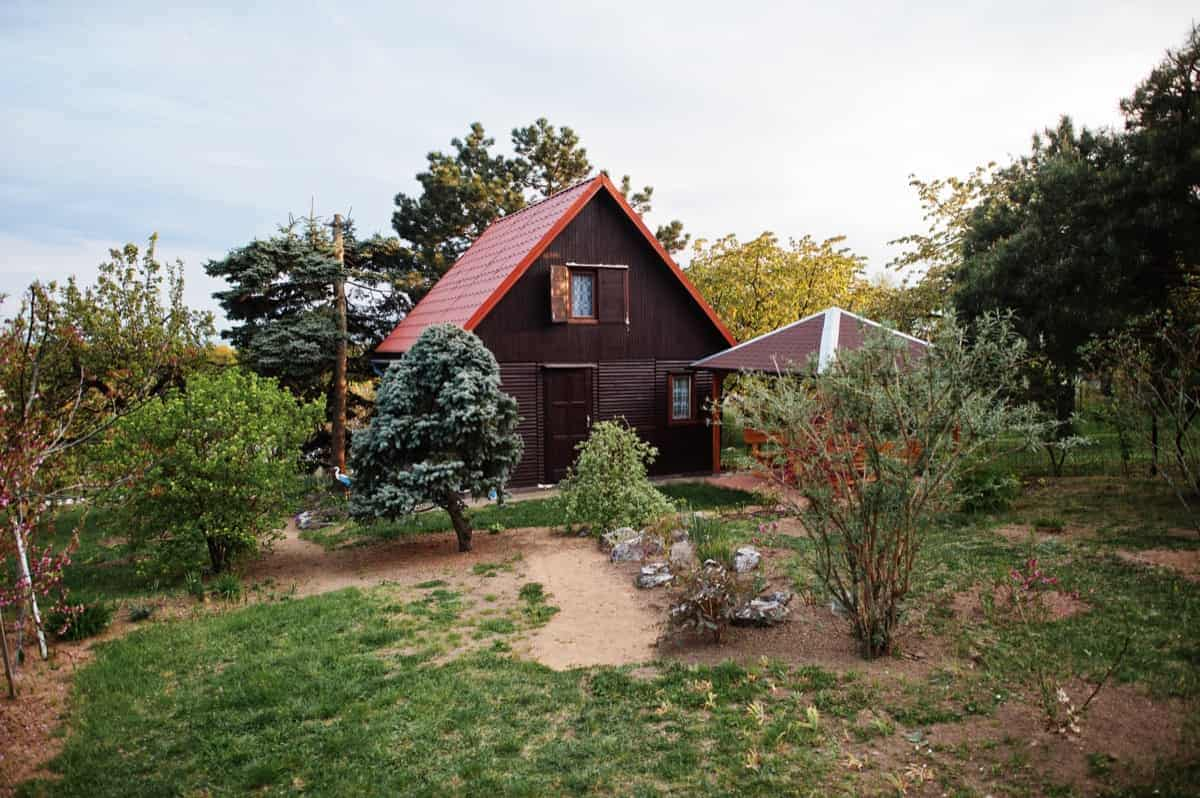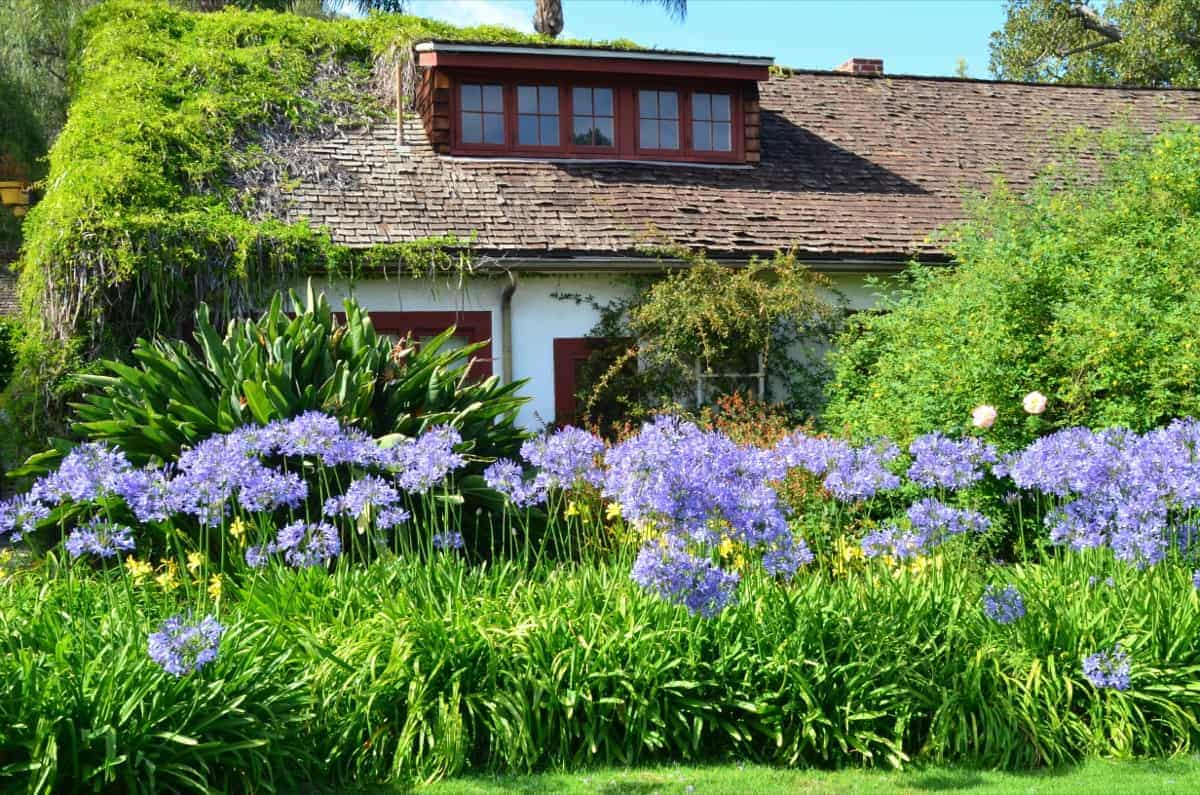Creating a low-maintenance cottage garden is an ideal way to enjoy a beautiful and charming outdoor space without the constant upkeep. Following these ten steps, you can achieve a budget-friendly cottage garden that requires minimal effort and time. This guide will provide tips on how to create a low-maintenance garden that still exudes the natural beauty and whimsical charm of a cottage setting. With a little planning and creativity, you can transform the outdoor space into a tranquil oasis that requires less maintenance.

Create a Low-Maintenance Cottage Garden in 10 Steps
Plan Your Cottage Garden Design
To create a low-maintenance cottage garden, start by designing a layout that maximizes space and minimizes clutter. Choose a variety of perennial plants that thrive in your climate, providing year-round interest. Incorporate paths and seating areas for accessibility and enjoyment. Keep the design simple, avoiding excessive ornamental features that require frequent upkeep. Prioritize native and drought-tolerant plants for sustainability and resilience.
Opt for curved pathways and irregularly shaped beds. Select a color scheme that suits your preferences, but aim for a mix of perennials, shrubs, and annuals to provide year-round interest. Incorporate elements like trellises, arbors, and rustic garden furniture to enhance the cottage’s charm.
Choose Low-Maintenance Plants
Opt for native or drought-tolerant perennials like lavender, yarrow, and black-eyed Susan, which require less water and maintenance. Incorporate self-seeding annuals such as poppies and cosmos for a wilder look. Choose disease-resistant shrubs like roses and hydrangeas. Opt for hardy, low-maintenance plants like lavender, salvia, coneflowers, and ornamental grasses.
These require minimal pruning and can withstand varying weather conditions. Select disease-resistant varieties to reduce the need for pesticides. Include evergreen shrubs for structure and year-round greenery. Consider self-seeding annuals like cosmos or poppies for effortless color.
Group Plants by Watering Needs
Efficiently manage water in your low-maintenance cottage garden by grouping plants with similar watering needs. Place drought-tolerant species together to minimize watering frequency. Create zones for high-water-use plants like vegetables and annuals, positioning them near a water source.
In case you missed it: Top DIY Cottage Style Garden Ideas

Use a garden hose or install drip irrigation to deliver water to the root zones, conserving moisture and reducing the need for manual watering. Regularly check soil moisture levels to ensure plants receive adequate hydration without overwatering. This approach simplifies garden maintenance and conserves water, making your cottage garden more sustainable and low-maintenance.
Implement Efficient Irrigation Systems
Install a programmable irrigation system with a rain sensor to automate watering schedules. Drip irrigation or soaker hoses will deliver water directly to the base of plants, reducing evaporation and weed growth. Use a timer to water during the early morning or late evening to minimize water loss to evaporation. Regularly inspect the system to prevent leaks or clogs. Consider using a smart irrigation controller for remote monitoring and adjustments. These steps will help conserve water and ensure your low-maintenance cottage garden thrives with minimal effort.
Incorporate Hardscaping Elements
Plan your hardscaping layout carefully to match the cottage garden’s aesthetics, ensuring they complement your plants’ natural beauty. To minimize garden upkeep, integrate,
- Pathways and Edging: Install gravel or mulch pathways to define walking areas and borders. This reduces weed growth and makes maintenance easier. Fencing can deter critters from damaging your garden.
- Raised Beds: Create raised beds with stone or wood borders. They provide a clear separation between plants, making weeding and maintenance more accessible.
- Patio or Seating Area: Install a small patio or seating area using pavers or flagstones. This not only adds charm but also minimizes the need for constant plantings.
- Containers and Pots: Place potted plants strategically throughout the garden to add color and variety. Containers are easier to maintain than in-ground beds.
- Arbors and Trellises: Incorporate structures like arbors and trellises for climbing plants. They add vertical interest and require less ground-level maintenance.
Practice Smart Weed Control
Start by mulching garden beds with organic materials like wood chips or straw to suppress weed growth and conserve soil moisture. Regularly inspect the garden for weeds and remove them at their early stages before they spread. Consider using landscape fabric under mulch for added weed prevention. Hand weeding or using a weeding tool is effective for precision weed removal. Avoid using chemical herbicides to preserve the garden’s eco-friendly appeal and protect beneficial insects.
Optimize Soil Health
Conduct a soil test to know nutrient levels and pH. Amend the soil with organic matter, like vermicompost or well-rotted manure, to promote its structure and fertility. Select plants that grow well in your soil type to reduce the need for constant adjustments. Mulch garden beds to regulate soil temperature, retain moisture, and suppress weeds. Applying a layer of mulch also encourages beneficial soil organisms. Avoid over-fertilization, as excessive nutrients can lead to rapid plant growth and more maintenance. By nurturing your soil, you’ll create a healthier, self-sustaining garden.
In case you missed it: 10 Common Mistakes to Avoid in Indoor Gardening for Healthy Plants Growth

Prune and Deadhead Regularly
Regular pruning and deadheading are essential for maintaining a low-maintenance cottage garden. Deadheading involves removing spent flowers to encourage continuous bloom and prevent the formation of seeds. Prune overgrown or damaged branches to maintain the garden’s shape and prevent overcrowding.
Use sharp and clean tools to make precise cuts. Focus on low-maintenance plant varieties that require minimal pruning. Establish a pruning schedule to avoid excessive growth and maintain a tidy appearance. Properly pruned and deadheaded plants not only look better but also require less care, making your cottage garden easier to manage and enjoy.
Implement Natural Pest Control Methods
Plan to introduce and encourage beneficial insects such as ladybugs and lacewings by planting nectar-rich flowers and herbs. Attract birds with bird feeders and birdhouses to help control pests. Introduce companion plants that repel common garden pests, such as marigolds, to deter aphids.
Use neem oil or soap-based insecticides sparingly and only when necessary, as they harm beneficial insects. Hand-pick larger pests like slugs and snails. Regularly inspect plants for symptoms of infestation and take prompt action to prevent pest populations from becoming overwhelming.
Regular Maintenance and Monitoring
Stay on top of maintenance by scheduling weekly or bi-weekly checks. Prune dead or diseased plant parts to prevent the spread of problems. Weed as needed, especially when weeds are small, to prevent them from taking over. Regularly fertilize your plants with slow-release organic fertilizers to maintain their health. Regularly check soil moisture and adjust irrigation, especially during dry spells.
In case you missed it: 15 Best Plants for Year-Round Containers: Low Maintenance and Drought Tolerant

Conclusion
Following these 10 steps to create a low-maintenance cottage garden that brings charm and beauty to outdoor space without breaking the bank or demanding excessive time and effort. Enjoy the rewards of your budget-friendly garden oasis while spending more time relaxing and less time maintaining.
- Feed Your Flock for Less: Top 10 Tips to Save on Chicken Feed
- Ultimate Guide to Ossabaw Island Hog: Breeding, Raising, Diet, and Care
- Hatching Answers: The Top 10 Reasons Your Chickens Aren’t Laying Eggs
- Eggs and Economics: Breaking Down the Cost of Raising Backyard Chickens
- Defend Your Greens: Proven Methods to Keep Iguanas Out of Your Garden
- Ultimate Guide to Cinnamon Queen Chicken: A Comprehensive Guide for Beginners
- Ultimate Guide to California Tan Chicken: Breeding, Raising, Diet, Egg-Production and Care
- Ultimate Guide to Marsh Daisy Chicken: Breeding, Raising, Diet, and Care
- 10 Types of Chicken Farming Businesses You Can Start for Profits